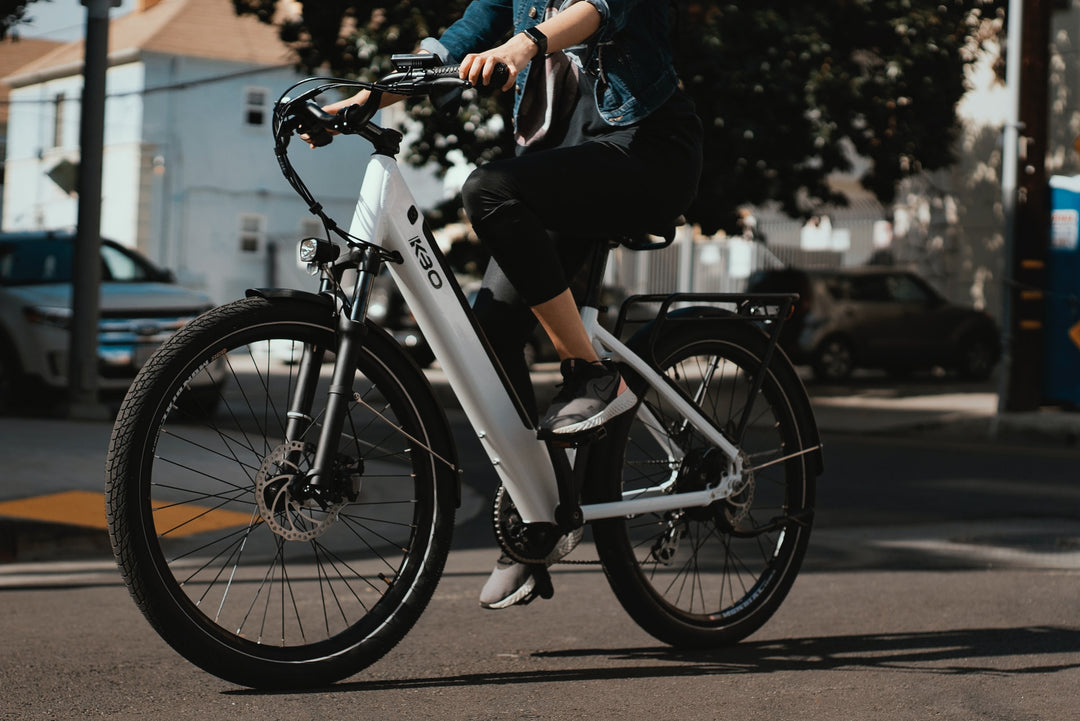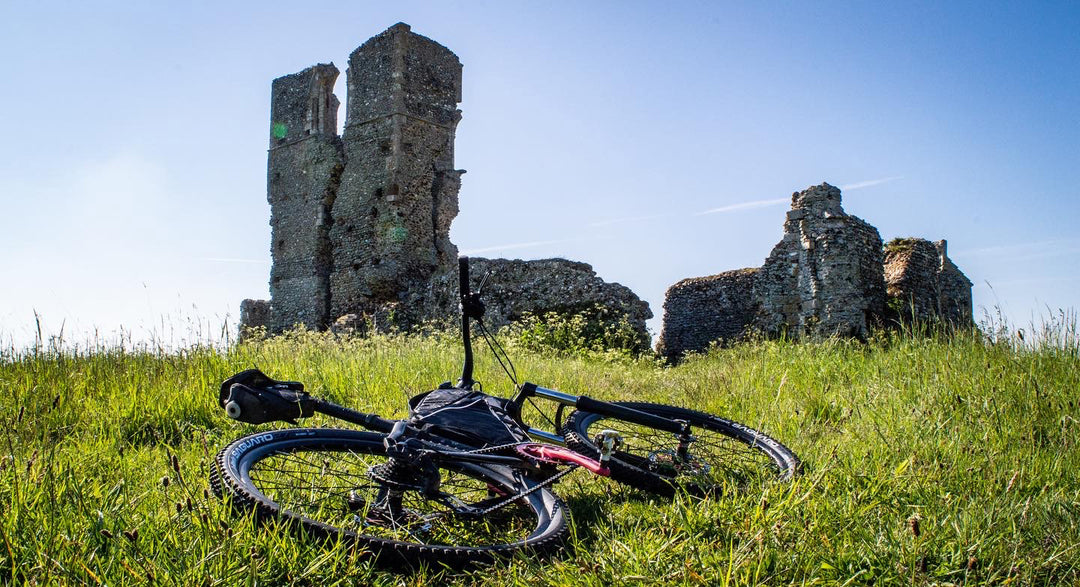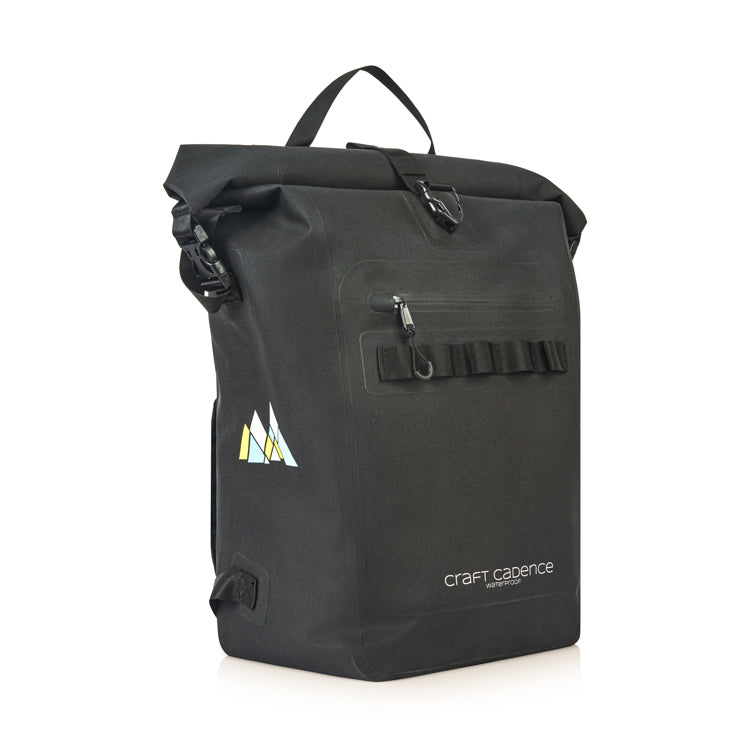Should I use a pannier or backpack for commuting? Or is a pannier backpack convertible best of both worlds?
Cycle commuting is an enjoyable way to get to and from work. However, whether you are new or experienced at doing it, plenty of decisions need to be made about the type of equipment you choose to invest in. One of the most critical purchasing decisions is what you will use to carry the valuable stuff that you need throughout the day.
The Pannier versus Backpack debate is as old as time among cycle commuters, and there are several reasons why many cyclists are firmly in one camp or the other. Throughout this article, we will draw on research and thousands of hours of cycle commuting experience to examine whether a pannier or backpack is the best option, or is there a way you can benefit from the best of both worlds?
Panniers for cycle commuting
Panniers are bags that attach to a rack on your bike. Traditionally it will be a rear rack behind your seat and the panniers clip or strap on the side. You can have a pannier on just one side, or if you have lots to carry or prefer the balance, you can have a pannier on either side.
The prerequisite for using panniers is to have a rack fixed on your bike. The rack can be at the front or back, though it is more common to have it at the back behind the seat post and above the back wheel.
Most commuter bikes come with the fittings required for a rear rack, but many road bikes designed for racing do not. You can get a rack that is fixed to your seat post. If you don’t have fittings and your seat post is not a standard round shape, it may be challenging to find a rack.
There is a range of racks of different sizes and shapes for various purposes, from commuting to adventure cycling. The key points are how long the racks are and the diameter of the rack to attach the pannier. Most racks are between 8-18 mm in diameter, and if you get a rack within this range, chances are most panniers bags will be compatible with them.
The next key point is the attachment system between the pannier bags and the rack, which has a significant bearing on the bag's stability and hence the rider's comfort. There are many different attachment systems, from simple velcro straps to dedicated clips that are adjustable in terms of distance between clips and the thickness of the rack. Some pannier bags offer a ‘quick release’ system where a button can be pressed, releasing the clips from the rack.
In general, the more sturdy the attachment system, the more stable the ride. It is worth investing in the attachment system when looking for a pannier bag. While the velcro straps options are lighter and can be found on fashionable, chic looking pannier bags, they are less reliable, unstable and may fall apart after a while.
The design and carrying volume of the pannier bag is an area where manufacturers take different approaches. Most pannier bags come with a roll top design for waterproofing, though other designs use a ‘hood’ for the same purposes. Bags can be sewn or seam welded. Sewn bags are not 100% waterproof but allow for more pockets, shapes, and organisational features. Seam welded bags are usually more functional in design with fewer organisational elements.
In terms of carrying capacity, panner bags usually carry between 20L - 30L (each). Making them very functional whether you just need to carry your supplies for a day at the office or decide to go bikepacking around the country.
Panniers have proven popular not only for bike packers or week-long cycling tourers. They also offer a convenient way for cycling commuters to carry everything they need to get through the day without placing stress on the rider’s body. For commuters, it is advisable to look for 100% waterproofing and organisational features inside the bag so you can separate your office tech items, clothes and lunch.
In summary, here are our pros and cons of choosing a pannier bag for commuting to work.
Pros:
- Increased comfort on the bike. One of the best perks of a pannier is that your bike does all the heavy lifting. This relieves pressure on your shoulders and back and removes the fear of turning up to work with an oversized sweat patch on your back.
-
Large Capacity. Panniers can be larger than backpacks as they do not have the same width restraints. In addition to the fact that you can double up and have a pannier on either side, you could easily be able to carry 40L+ while using panniers.
-
Waterproof. It is a lot easier to find a 100% waterproof pannier than it is a backpack. Combining a waterproof material with a roll-top closing mechanism seems to be the most effective way at keeping unwanted water out of your panniers, no matter how hard the downpour is. A waterproof material also makes the panniers easy to clean up after a particularly muddy and wet commute.
Cons
- Awkward to carry off the bike. Panniers are an excellent companion on the bike, but as soon as you jump off the bike and need to carry them, they can be less than ideal. Most pannier bags come with a strap that can be attached to the bag, which slings around the shoulder. This can get uncomfortable after a while, especially if you need to walk with the bag for business during the day.
- You need to have racks on your bike. Although many bike types allow for the installation of racks, if your bike does not come with a rack, it is another expense to get one installed. Also, not everyone likes the look of a rack on their beloved bicycle. Further, if you use the same bike for weekend road cycling, it is a flaff to take them off and on, and carrying a rack while road riding can be an eyesore to many riders.
- Lack of compartments. Most panniers will be one big cavernous space to put everything you need. This makes it tricky to find smaller items in a hurry.
- Balance. It can take people some time to get used to the weight disruption of having one pannier on the back of the bike. It is easy to get the hang of riding with a 25L pannier on just one side, but be mindful of its impact when starting.
Backpacks for cycle commuting
Backpacks have always been a staple for a lot of cycling commuters. They offer an easily accessible extension to yourself to carry everything you could need for the day ahead. A cycling backpack needs to be comfortable, not restrictive, waterproof and durable.
We have done many articles on the key features of cycling-specific backpacks for commuting here and here. In general, they are easy and convenient to use and place fewer requirements on your bike and bags, such as racks and attachment systems. However, the main argument against backpacks is the dreaded sweaty back and the discomfort if you need to carry a heavy load. However, if you like your bike to look clean, do not need to carry heavy items to work, and the weather is not unbearably hot, then backpacks may be the best option for you.
In summary, here are the pros and cons of using backpacks for cycle commuting:
Pros
- Comfort off the bike. Cycling backpacks are the best way for you to carry your stuff while off the bike. They are comfortable, and your shoulders/back absorb much of the weight.
- You do not need to install a rear rack on your bicycle.
- Good compartmentalisation. The best cycling backpacks have compartments in the main bag and smaller easy to reach side pockets.
- Easy to access. As the name suggests, your backpack is on your back at all times, making it easy to grab your water bottle mid-ride or super quick to get something out of one of the compartments once you stop.
- Aerodynamic. As your body is already acting like a windbreak, a bag behind it adds little extra resistance.
Cons
- Back sweat. No matter how mild the weather, you need to factor in the increased pressure of a pack on your back. It will result in an unsightly sweat patch when you jump off the bike.
- Limited capacity. A cycling backpack can only be so large; otherwise, it gets in the way and become very uncomfortable. Generally, a 25L to 30L capacity would be the max you can comfortably carry on your back.
- Discomfort or back pain. As you carry all the weight on your back, this can lead to discomfort if you are taking a heavy load or on a particularly long commute.
Pannier versus Backpack for cycle commuting
If you are a seasoned cycling commuter, you can undoubtedly sympathise with a lot of the above. Or, if you are new to cycling, the above should help steer you in the right direction as to whether a pannier or backpack is the best option for you.
Is there an outright winner of Pannier Versus Backpack for cycle commuting? Probably not. The reality is that each of them has its merits, and it does boil down to personal preference on what is most important to you.
Pannier backpack convertible. Best of both worlds?
What is the merit of a pannier that can convert into a backpack? Can that give you the best of both worlds? Some pannier backpacks convertibles or 2-in-1 s that are offered by the market, but they have not taken off and are not a common sight amongst commuters.
We think the main reason for this is that these convertibles tend to be “jack of all trades, but master of none”. For example, most pannier backpack convertibles use a limited rack attachment system to not affect comfort in backpack mode. Some use velcros straps, while others use a pair of clips that are fixed in position - meaning they cannot be adjusted to suit different racks or rack diametres. This compromises the functionality of the bag in pannier mode.
Sometimes, the attachment system is exposed in backpack mode, adversely affecting the bag's comfort when worn. The worst offence in backpack mode is the lack of padding on the back, which makes it a less than ideal experience in that mode.
The other main drawback with most pannier backpacks is the time it takes to convert between the two modes. The more complex the procedure, the more flaff, the less likely the user will make the best use of both functionalities, and hence overall experience suffers. Many pannier backpack convertibles involve many steps to changes between the modes.
Our challenge: - the Craft Cadence Pannier Backpack
As mentioned at the start of the article, this debate has divided cyclists since the dawn of two-wheeled pedal power. We set ourselves the challenge of developing a pannier backpack that proves commuters can have the best of both worlds. A pannier backpack that is a master of both form factors.
Although some companies have tried to combine the pannier and backpack before, there was still plenty to learn from their mistakes.
Firstly, we did not skimp on the pannier rack attachment system. We use a fully fledge attachment system with a hard plastic body screwed to the body of the bag metal fixings and a fully adjustable set of clips that caters for a range of rack sizes and diametres (8-18 mm). This ensures that the same feeling and functionality using the bag in pannier mode replicates that of pannier only bags as much as possible.
Secondly, we made sure there is thick padding in both upper and lower back in backpack mode, ensuring that it is indistinguishable from any regular comfortable backpack worn on your back.
Finally, we have developed our own unique system for converting between pannier and backpack modes that takes seconds instead of minutes. Using a thickly padded “flap” mechanism, simply flip the flap down to reveal the mounting system for pannier mode. To convert into backpack mode, pull the flap up to conceal the mounting system and pull the backpack straps out from the dedicated back pocket, securing them with the lower strap buckles.
In addition, we have all the commuter features and waterproofing that one would expect. Internally, our pack includes a detachable laptop sleeve organiser with 8 pockets/compartments, so you can easily store and separate your office essentials and electronics. Externally, we have a water bottle holder that fits standard bottles and a D-lock holder to provide easy security for your bike at all times.
By combining the best of both worlds, we believe Craft Cadence Pannier Backpack Convertible ticks all the boxes and proves to cyclists that you can have the best of both worlds between pannier and backpacks. Thanks to the durable mounting system, comfortable foam back, and waterproof design, you benefit from all the best parts of panniers and backpacks.
So whether you prefer backpacks but are fed up with getting a sweaty back, want to carry more without causing discomfort, or hate having to carry a pannier in one hand through a train station, our Craft Cadence Pannier Backpack has you covered and can help you enjoy your cycling commute come rain or shine.
Final Thoughts
Between panniers and backpacks, Depending on your needs, there will always be a need for each bag type. However, if you think you have use cases for both and would enjoy the flexibility between the two options, a pannier backpack convertible could now be a viable option for you.
What camp are you in? Do you think a pannier backpack makes sense for you? Do you have any questions about our pannier backpack?



